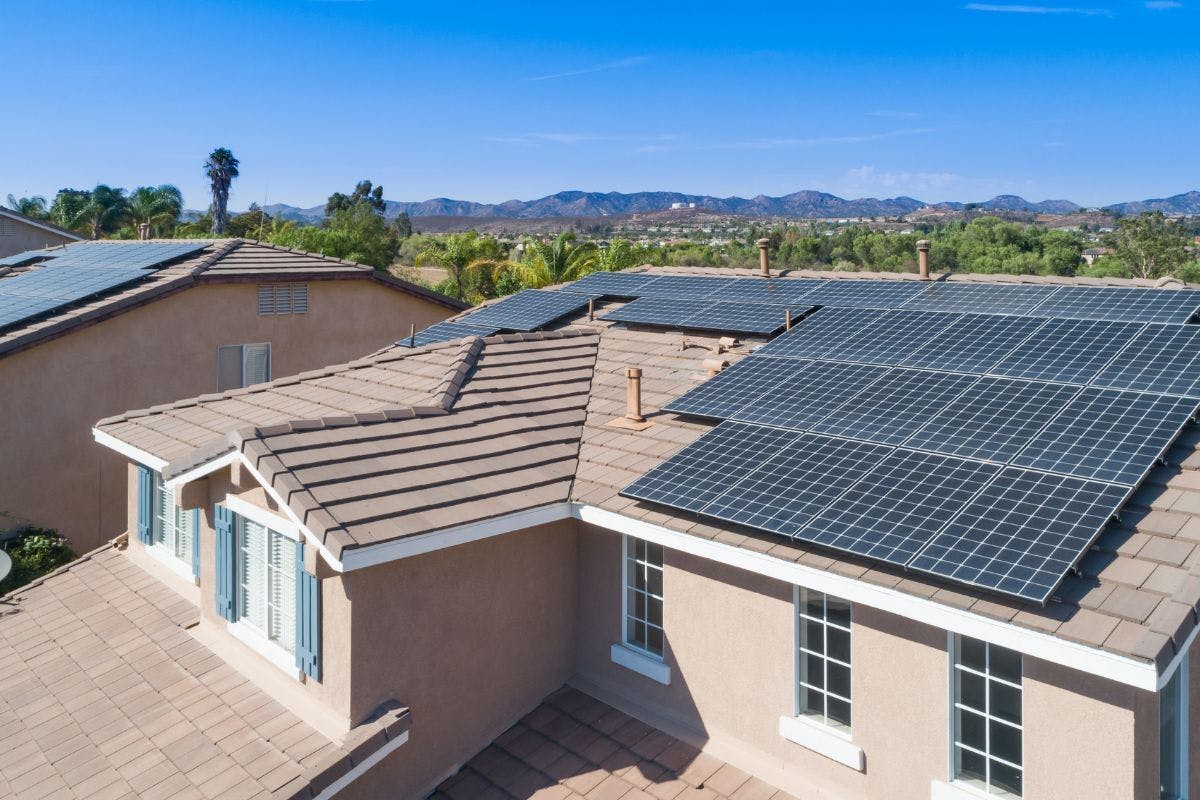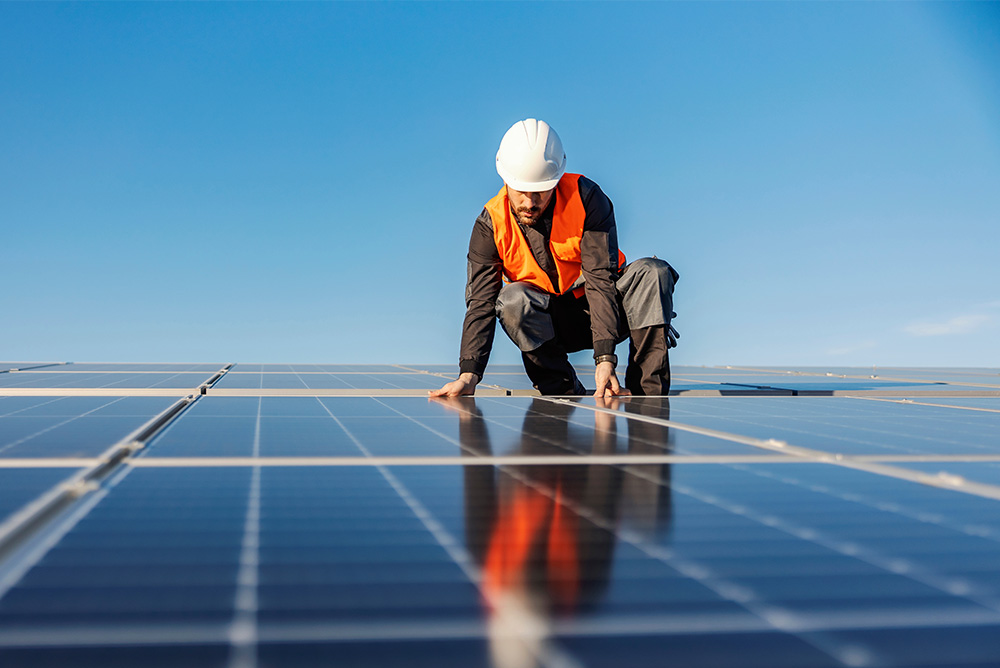Recommended Solar Company Options in Texas
Wiki Article
Discovering the Various Sorts Of Solar Panels and Their Special Advantages
The landscape of solar panels provides numerous options, each with unique benefits matched to different applications. Monocrystalline panels stick out for their efficiency and aesthetics, while polycrystalline designs appeal to budget-conscious customers. Thin-film modern technology gives versatility in setup. Innovative styles like building-integrated and bifacial photovoltaics further boost the appeal of solar power. Recognizing these differences is essential for making notified choices. The question continues to be: which type will best meet details energy requirements?Monocrystalline Solar Panels
Although various kinds of solar panels are available, monocrystalline solar panels are frequently related to as one of the most reliable option. These panels are made from a solitary crystal structure, usually silicon, which enables them to convert sunlight right into electricity a lot more successfully than other types. The performance rates for monocrystalline panels can range from 15% to over 22%, making them a preferred choice for property and business setups where space is restricted.
Polycrystalline Solar Panels
Polycrystalline solar panels are generated making use of a distinctive manufacturing process that entails melting numerous silicon crystals with each other. This technique can lead to advantages such as lower production expenses, making them a prominent selection for lots of consumers. However, their performance and performance elements might differ compared to other sorts of solar panels, necessitating mindful consideration.Manufacturing Process Benefits
The production process of polycrystalline solar panels supplies a number of benefits that contribute to their appeal in the renewable resource industry. The production utilizes silicon scrap, which minimizes waste and lowers material costs, making it economically viable. Unlike monocrystalline panels, the manufacturing of polycrystalline panels entails simpler and less energy-intensive methods, causing a smaller carbon footprint. Furthermore, the spreading procedure permits for the development of multiple cells simultaneously, boosting effectiveness in production. This approach additionally causes an extra consistent structure, which can enhance the overall efficiency and longevity of the panels. As a result, polycrystalline solar panels present an affordable option for customers while promoting lasting production methods within the market.Efficiency and Performance Variables
How do performance and efficiency variables affect the efficiency of polycrystalline photovoltaic panels? These panels commonly exhibit lower performance prices, averaging around 15-20%, contrasted to their monocrystalline counterparts. Variables such as temperature level of sensitivity, shading, and the angle of installation considerably impact their performance. Polycrystalline panels have a tendency to perform better in cooler climates however might battle in heats, resulting in minimized outcome. In addition, their efficiency can be influenced by dirt and particles build-up, necessitating routine maintenance. In spite of these obstacles, polycrystalline panels are more budget-friendly and use a solid balance between cost and efficiency. Comprehending these performance and efficiency factors is essential for consumers looking for to take full advantage of solar energy production and total system performance.Thin-Film Solar Panels
Thin-film solar panels represent a lightweight and versatile alternative in the solar power landscape. These panels are built by depositing one or more thin layers of solar product onto a substratum, which can consist of metal, plastic, or glass. This manufacturing procedure permits for better versatility in layout and applications compared to traditional crystalline solar panels.
Thin-film technology normally includes reduced performance rates, however it compensates for this with lowered manufacturing costs and enhanced performance in low-light problems. Their light-weight nature makes them ideal for installation on diverse surfaces, including rounded structures and lorries. Furthermore, these panels can be integrated into structure products, providing aesthetic advantages along with energy generation.
Bifacial Solar Panels
Bifacial solar panels are acquiring interest for their improved effectiveness and performance, as they can record sunshine from both sides. This dual-sided design permits increased power manufacturing, particularly in reflective atmospheres. Additionally, their installation supplies prospective expense advantages, making them an attractive choice for various applications.Effectiveness and Efficiency
The effectiveness and performance of solar panels are essential elements in establishing their effectiveness in energy generation, with bifacial solar panels attracting attention for their cutting-edge layout. These panels include photovoltaic or pv cells on both sides, allowing them to record sunshine from several angles. This dual-sided capability improves power outcome, especially in settings with reflective surface areas, such as snow or sand. Bifacial solar panels can raise energy manufacturing by 10-20% contrasted to typical monofacial panels. Their capacity to harness indirect sunshine contributes to their general efficiency, making them an engaging option for numerous applications. Innovations in technology proceed to improve their efficiency metrics, strengthening their area in the sustainable power landscape as a highly efficient solution for solar power generation.installation and Expense Advantages
When taking into consideration the benefits of bifacial solar panels, the installation process and expense advantages are significant elements that can influence decision-making for both industrial their website and domestic applications. Bifacial panels can be installed on various frameworks, including rooftops and ground installments, enabling for flexible deployment. Their capability to absorb sunshine from both sides enhances power generation without needing added panels. This efficiency can lead to minimized general installation prices, as fewer units may be required to attain desired energy outcomes. Additionally, their sturdiness commonly equates to decrease maintenance costs over time (Solar Panels). Because of this, the lasting monetary advantages, incorporated with installation adaptability, make bifacial solar panels an attractive choice for those seeking sustainable power solutionsBuilding-Integrated Photovoltaics (BIPV)
Building-Integrated Photovoltaics (BIPV) stand for a significant development in solar innovation, flawlessly including solar batteries into building products such as facades, roofing systems, and windows. This cutting-edge technique not only generates eco-friendly energy yet likewise improves the visual appeals and performance of structures. BIPV systems can replace traditional building products, decreasing the general cost of building while adding to energy effectiveness.The assimilation of solar modern technology into architectural design enables far better room application, as these systems can be set up without needing additional land. Additionally, BIPV solutions are adjustable, making it possible for engineers to create one-of-a-kind styles that enhance the structure's total look. The twin functionality of BIPV-- offering both as a power generator and an architectural component-- supplies significant advantages in urban settings where room is limited. As understanding of sustainable structure practices grows, BIPV is becoming an increasingly attractive choice for developers and property owners alike.
Concentrated Photovoltaic (CPV) Systems
Concentrated Photovoltaic (CPV) systems represent an advanced solar innovation that makes use of lenses or mirrors to focus sunlight onto high-efficiency solar batteries. This innovative method enables the collection of significantly even more solar energy than traditional photovoltaic or pv systems. By concentrating sunshine, CPV systems can attain higher performances, commonly surpassing 40%, making them especially appropriate for areas with high direct sunlight.In addition, CPV systems normally require much less land area compared to traditional photovoltaic panels, as they produce more power from a smaller footprint. These systems typically incorporate tracking devices that change the placement of the lenses or mirrors to follow the sun's movement, taking full advantage of energy capture throughout the day. CPV innovation is best fit for details geographic places, where straight sunlight is abundant, limiting its applicability in regions with constant cloud cover - Solar Installer. Generally, CPV systems present an encouraging alternative for boosting solar energy production in optimal settings
Comparison of Photovoltaic Panel Effectiveness and Price
Various solar panel innovations exist, their effectiveness and cost can significantly vary, influencing customer choices and market dynamics. The most common types-- monocrystalline, thin-film, and polycrystalline-- display distinct features in efficiency and prices. Monocrystalline panels often tend to use the greatest performance prices, often surpassing 20%, but they generally feature a greater price. In contrast, polycrystalline panels are generally extra budget-friendly, with effectiveness around 15-20%, making them a prominent selection for budget-conscious consumers. Thin-film technologies, while much less reliable at about 10-12%, provide flexibility and reduced installation prices, appealing to details applications.Inevitably, choosing the ideal solar panel includes considering the balance between efficiency and price. Customers need to consider their energy needs, spending plan restrictions, and long-term savings possibility, as these aspects will determine the very best selection for their solar power system.
Often Asked Questions
Exactly How Lengthy Do Solar Panels Generally Last Prior To Requiring Replacement?
Solar panels commonly last in between 25 to thirty years before needing replacement. Their sturdiness depends on numerous factors, consisting of top quality, setup, and local environmental conditions, which can affect their performance and durability in time.
Can Solar Panels Work in Cloudy or Rainy Issues?
Solar panels can undoubtedly operate in wet or cloudy problems, albeit at decreased effectiveness. They still record diffuse sunlight, permitting power generation, though energy outcome might be considerably less than on bright days.What Upkeep Is Required for Solar Panels?
Regular upkeep for solar panels includes regular cleaning to get rid of dust and particles, view it now checking for damages, ensuring links are secure, and reviewing system efficiency. Regular examinations can improve efficiency and lengthen the life expectancy of the panels.Are There Any Type Of Ecological Influences From Production Solar Panels?
Yes, producing solar panels can have environmental influences, including source removal, power consumption, and waste generation. Developments in technology objective to decrease these effects, advertising more lasting practices in manufacturing and reusing processes.How Do I Pick the Right Solar Panel for My Home?

Numerous kinds of solar panels are readily available, monocrystalline solar panels are often concerned as the most reliable alternative. Thin-film solar panels represent a functional and light-weight alternative in the solar power landscape. The efficiency and performance of solar panels are vital variables in identifying their performance in power generation, with bifacial solar panels standing out for their innovative style. Building-Integrated Photovoltaics (BIPV)
Building-Integrated Photovoltaics (BIPV) represent a significant evolution substantial solar technology, modern technology here incorporating flawlessly including into building materials structure as windows, facades, home windows roofs. Concentrated Photovoltaic (CPV) systems stand for a sophisticated solar modern technology that uses lenses or mirrors to focus sunshine onto high-efficiency solar cells.
Report this wiki page